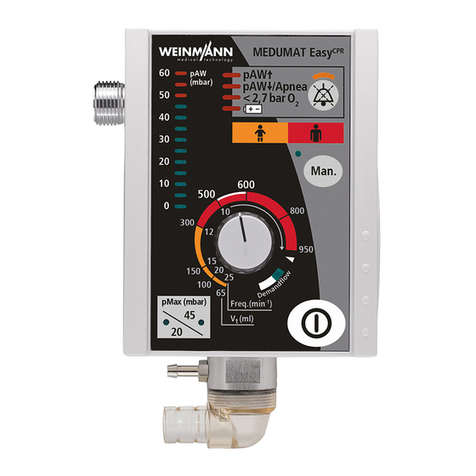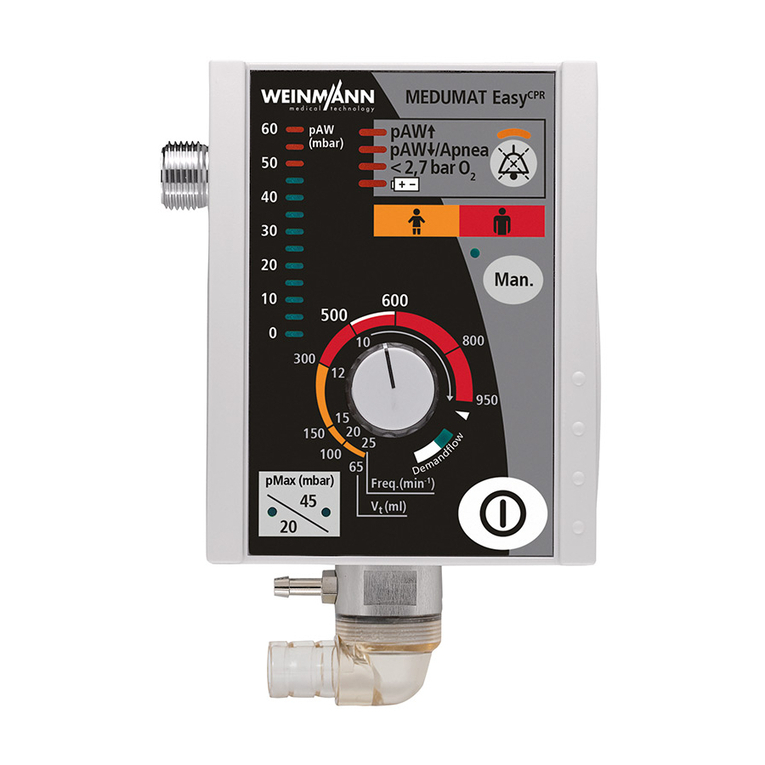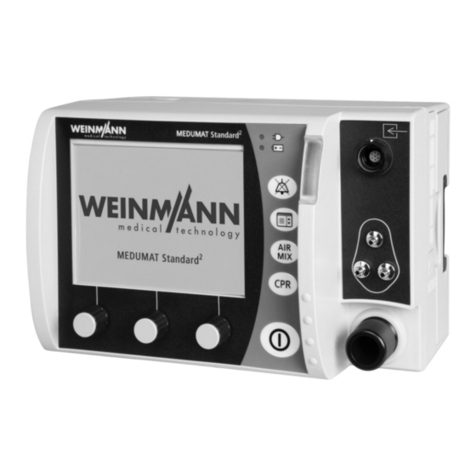
WM 68261f 01/2021
MEDUMAT EasyCPR EN 3
Table of Contents
5.5 Checking device functions ........................................................... 43
6 Operation 53
6.1 Preparing for ventilation .............................................................. 53
6.2 Setting the ventilation parameters ............................................... 58
6.3 Switching the device on ............................................................... 61
6.4 Ventilating the patient ................................................................. 62
6.5 Muting alarms ............................................................................. 68
6.6 Switching the device off .............................................................. 69
7 Disassembly 70
7.1 Disassembling the ventilation mask and tube ............................... 70
7.2 Disassembling the breathing system filter ..................................... 71
7.3 Disassembling the PEEP valve ...................................................... 72
7.4 Disconnecting the breathing circuit and MEDUtrigger from
the device ....................................................................................72
7.5 Removing the oxygen supply ....................................................... 75
7.6 Disconnecting the retaining plate and fastening strap from
the device ....................................................................................76
8 Cleaning and disinfection 79
8.1 Intervals ...................................................................................... 79
8.2 Cleaning and disinfection plan ..................................................... 79
8.3 Performing cleaning and disinfection ........................................... 81
9 Alarms and error messages 90
9.1 Alarms ........................................................................................ 90
9.2 Faults .......................................................................................... 93
10 Maintenance 96
10.1 Intervals ...................................................................................... 96
10.2 Sending the device in for maintenance ......................................... 97
10.3 Changing the battery ................................................................... 97
11 Transport, storage and disposal 99
11.1 Transporting the device ............................................................... 99
11.2 Storing the device ........................................................................ 99
11.3 Disposal .................................................................................... 100
































